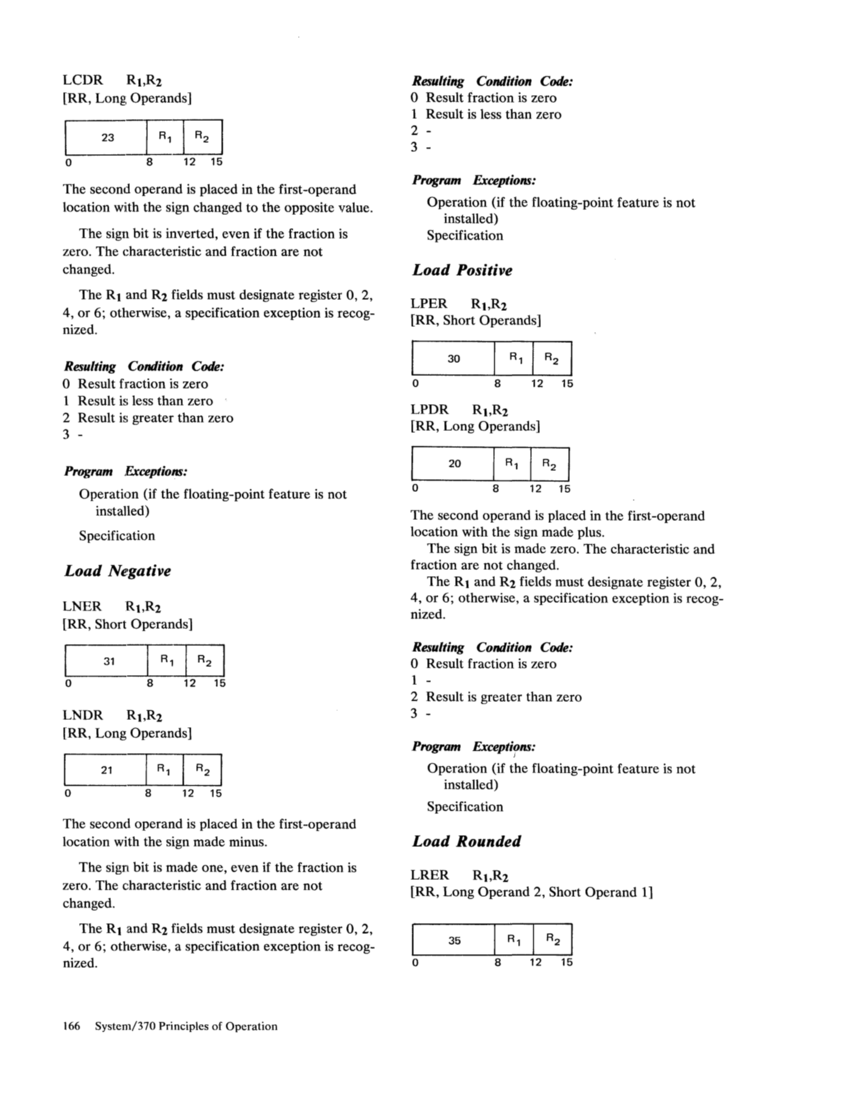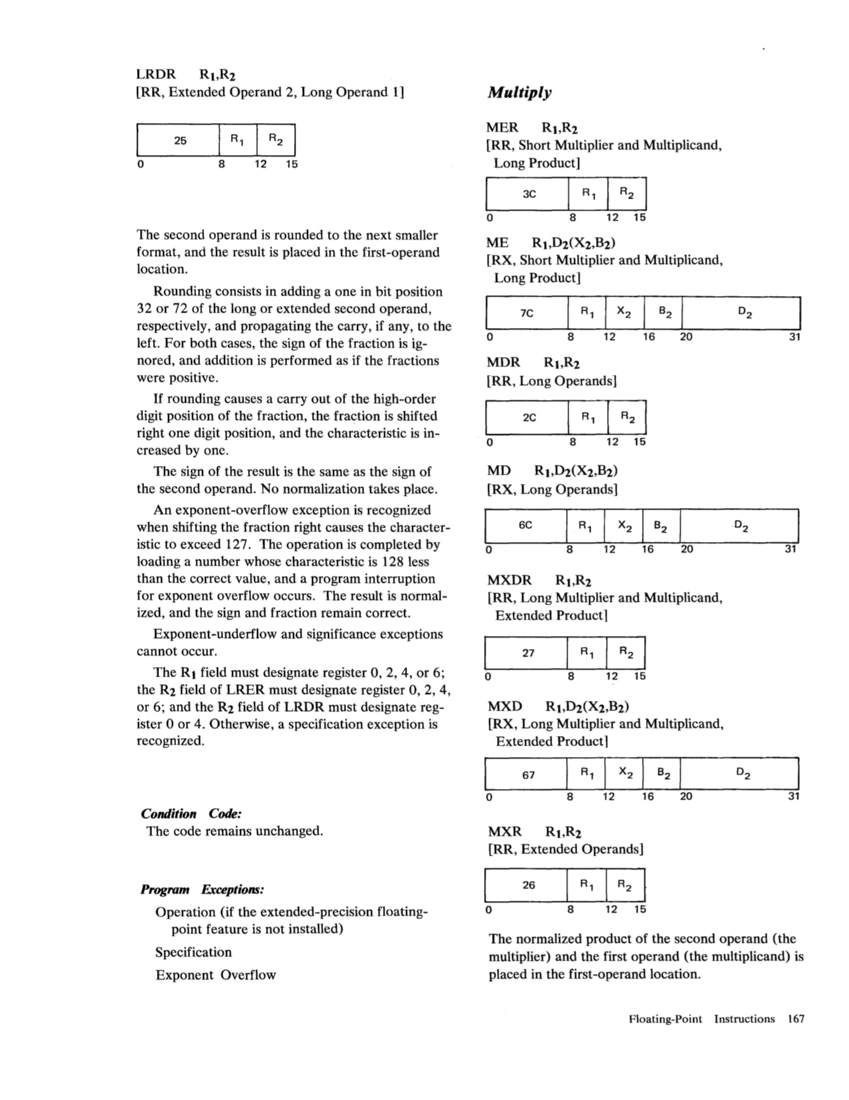LCDR Rl,R2
[RR, LongOperands] The second operand is placed in the first-operand
locationwith the sign changed to the opposite value.
The sign bit is inverted, even if the fraction is
zero. Theeharacteristic and fraction are not
changed.
The Rl and R2 fields must designate register0, 2,
4, or6; otherwise, a specification exception is recog
nized.
Resulting Condition Code:° Result fraction is zero
1 Resultis less than zero
2 Resultis greater than zero
3 -
ProgramExceptions: Operation (if the floating-point feature is not
installed)
Specification
Load Negative
LNER Rl,R2
[RR,Short Operands] LNDR Rl,R2
[RR, LongOperands] o 8 12 15
The second operand is placed in the first-operand
location with the sign made minus.
The sign bit is made one, even if the fraction is
zero. The characteristic and fraction are not
changed.
The Rl and R2 fields must designate register0, 2,
4, or6; otherwise, a specification exception is recog
nized.
166System/370 Principles of Operation Resulting Condition Code: ° Result fraction is zero
1 Result is less than zero
2 -
3 -
Program Exceptions:Operation (if the floating-point feature is not
installed)
Specification
Load PositiveLPER Rl,R2
[RR,Short Operands] 30 o 8 12 15 LPDR Rl,R2
[RR, LongOperands] 20 o 8 12 15
The second operand is placed in the first-operand
location with the sign made plus.
The sign bit is made zero. The characteristic and
fraction are not changed.
The Rl and R2 fields must designate register0, 2,
4, or6; otherwise, a specification exception is recog
nized.
Resulting Condition Code:° Result fraction is zero
1 -
2 Result is greater than zero
3 -
Program Exceptions:
JOperation (if the floating-point feature is not
installed)
Specification
Load Rounded
LRER Rl,R2
[RR, LongOperand 2, Short Operand 1]
35
o 8 12 15
[RR, Long
location
The sign bit is inverted, even if the fraction is
zero. The
changed.
The Rl and R2 fields must designate register
4, or
nized.
Resulting Condition Code:
1 Result
2 Result
3 -
Program
installed)
Specification
Load Negative
LNER Rl,R2
[RR,
[RR, Long
The second operand is placed in the first-operand
location with the sign made minus.
The sign bit is made one, even if the fraction is
zero. The characteristic and fraction are not
changed.
The Rl and R2 fields must designate register
4, or
nized.
166
1 Result is less than zero
2 -
3 -
Program Exceptions:
installed)
Specification
Load Positive
[RR,
[RR, Long
The second operand is placed in the first-operand
location with the sign made plus.
The sign bit is made zero. The characteristic and
fraction are not changed.
The Rl and R2 fields must designate register
4, or
nized.
Resulting Condition Code:
1 -
2 Result is greater than zero
3 -
Program Exceptions:
J
installed)
Specification
Load Rounded
LRER Rl,R2
[RR, Long
35
o 8 12 15










































































































































































































































































































































